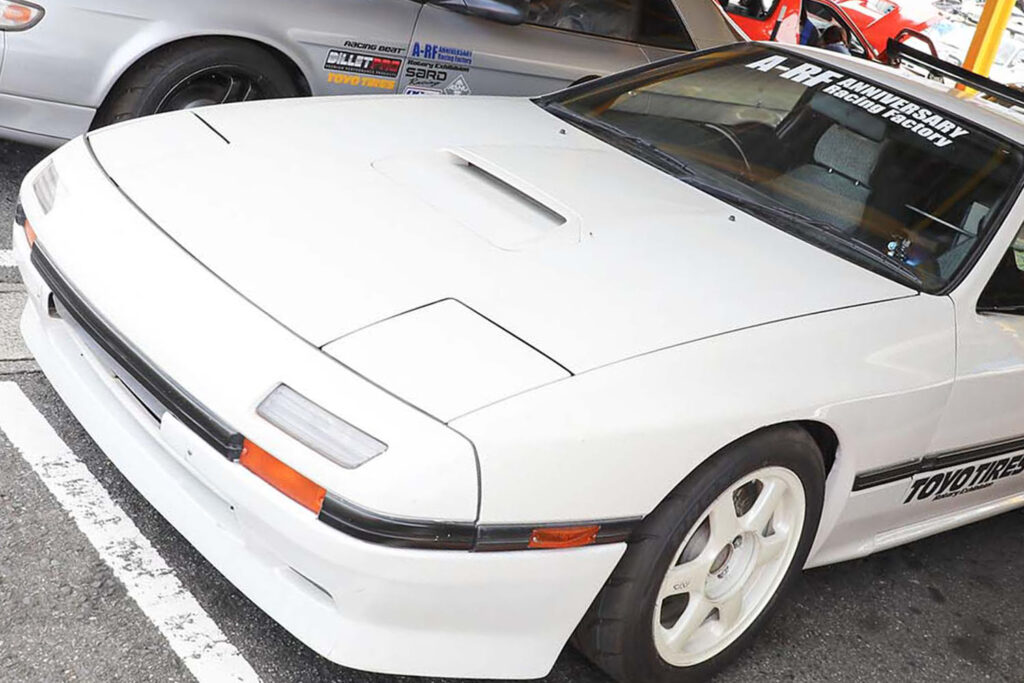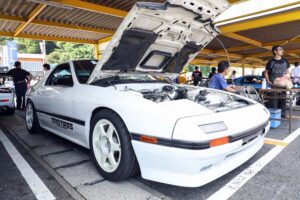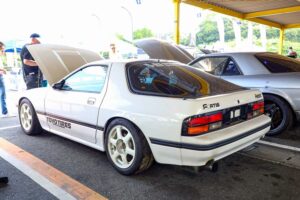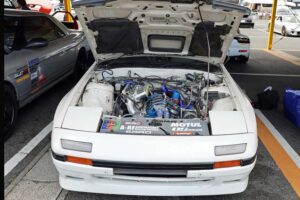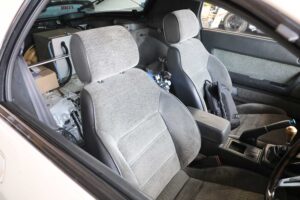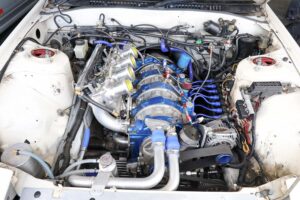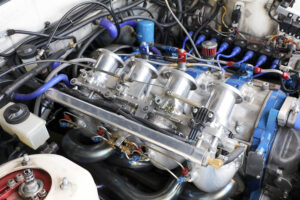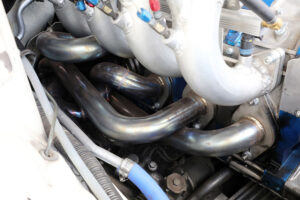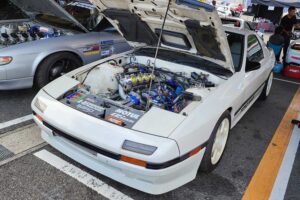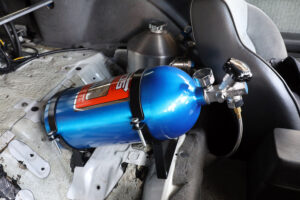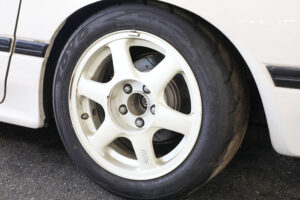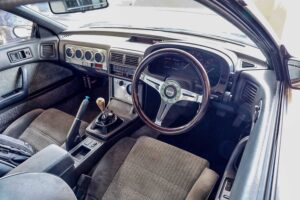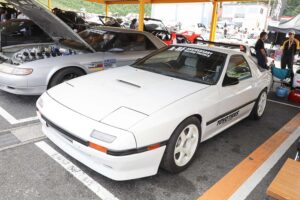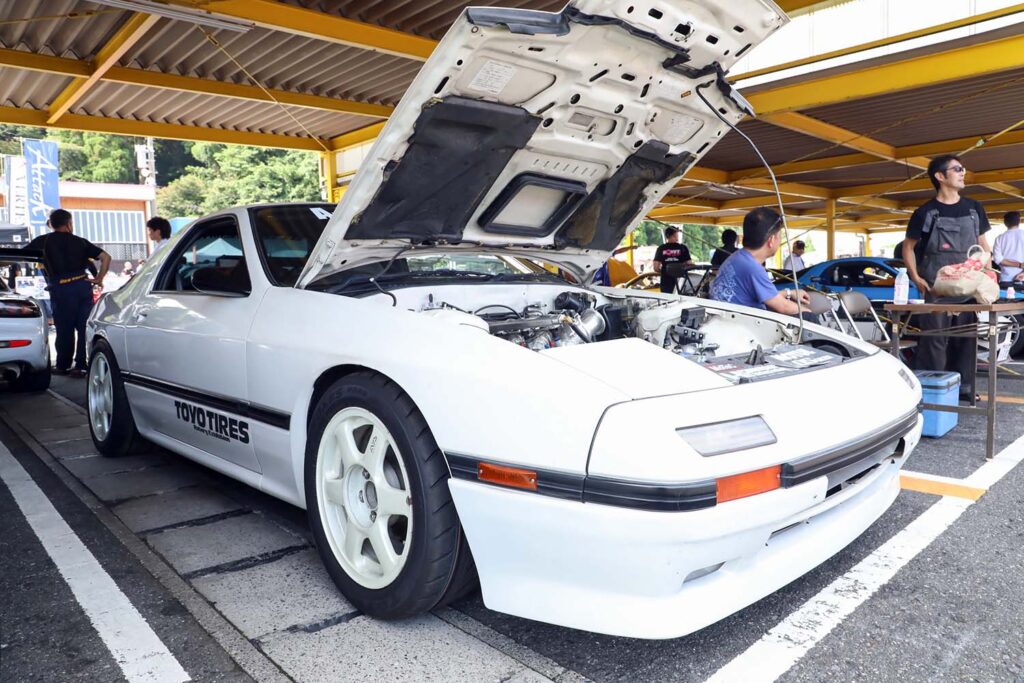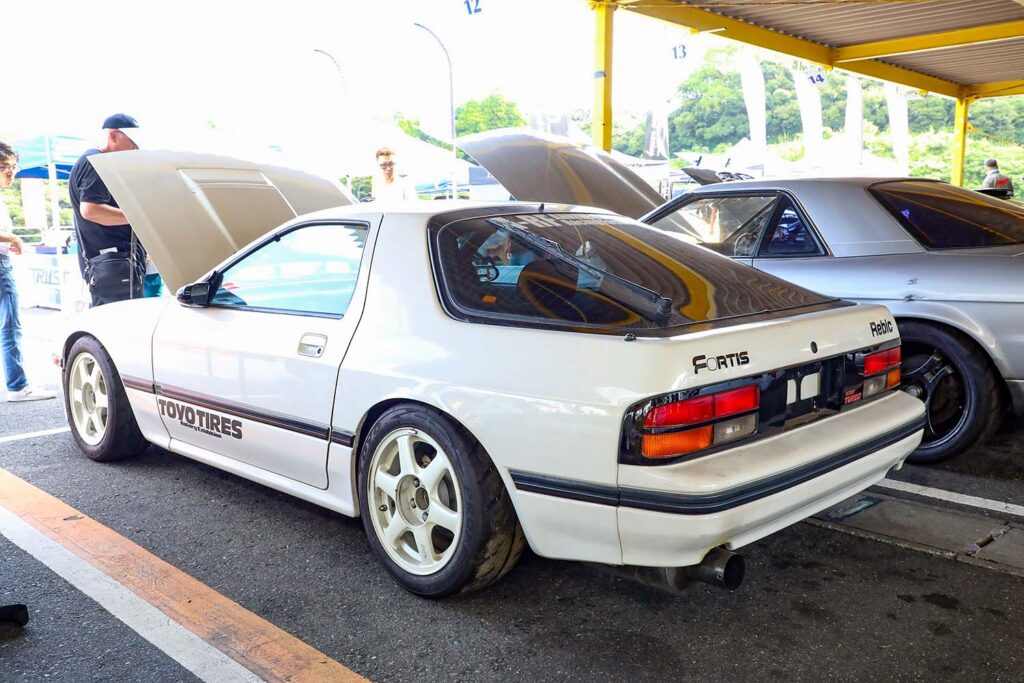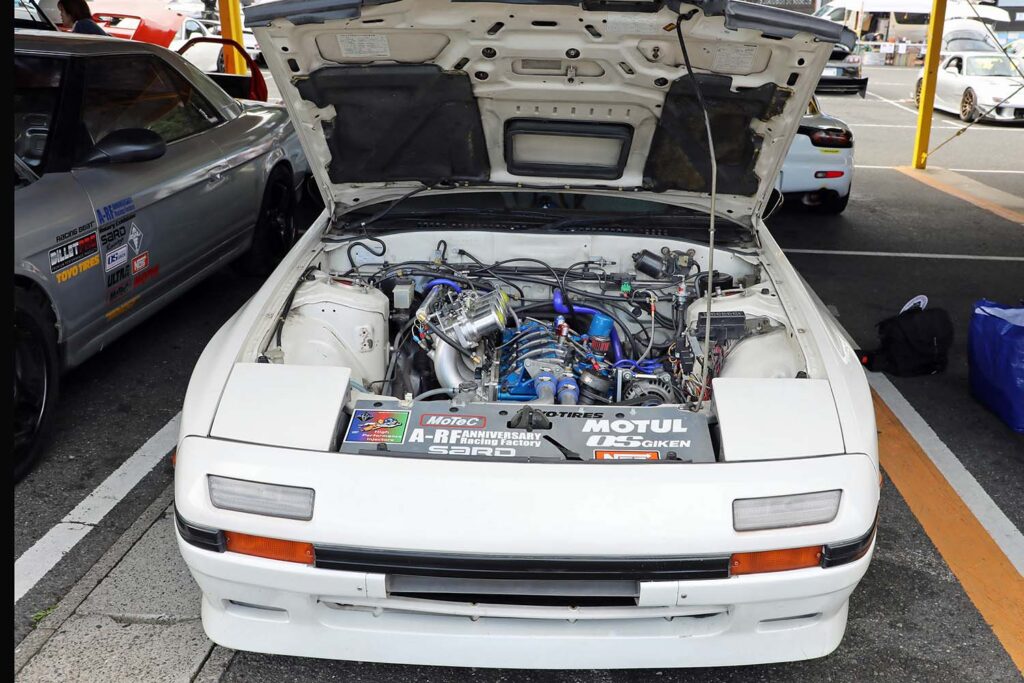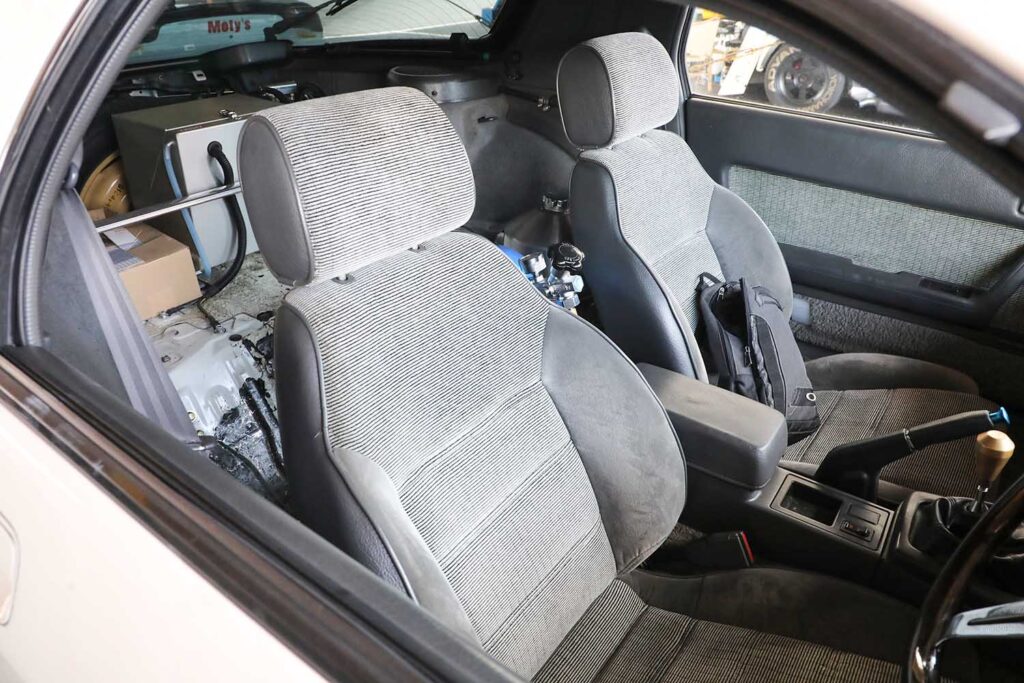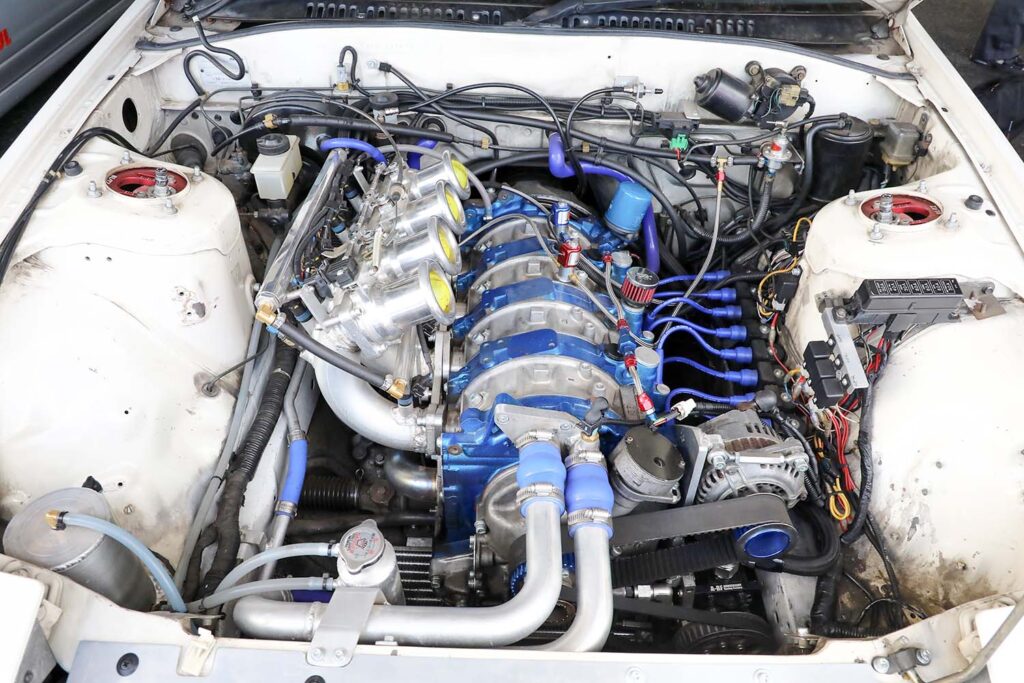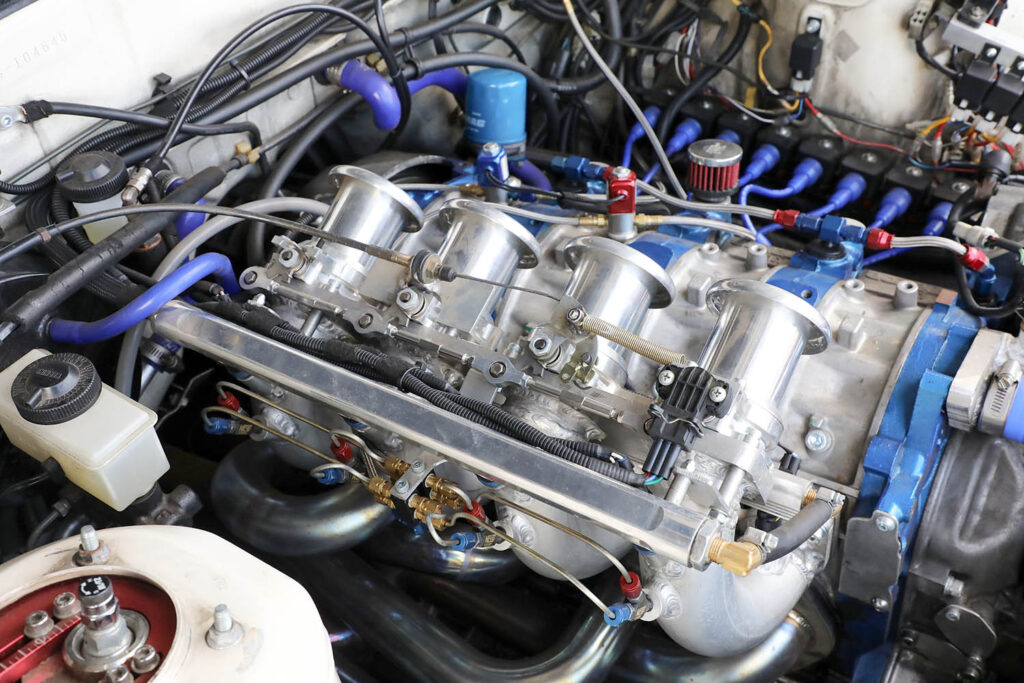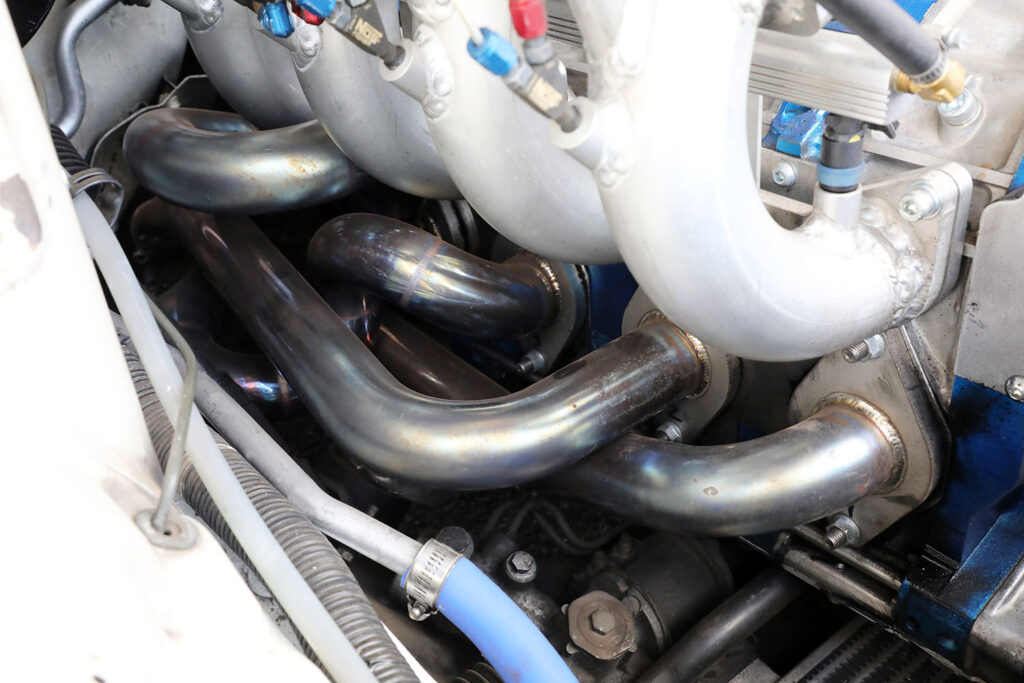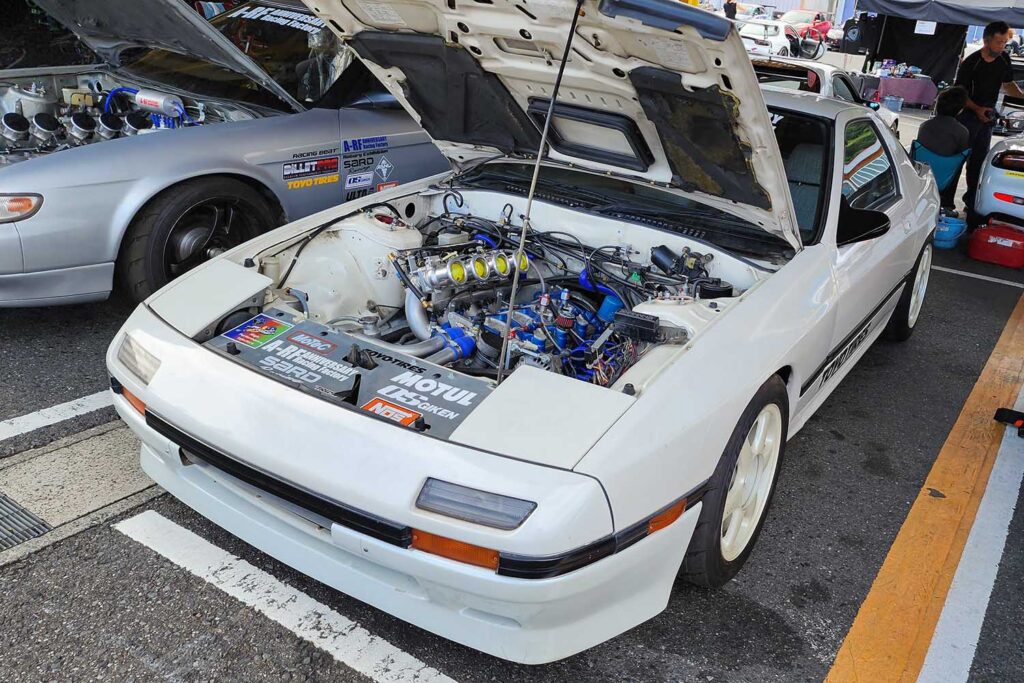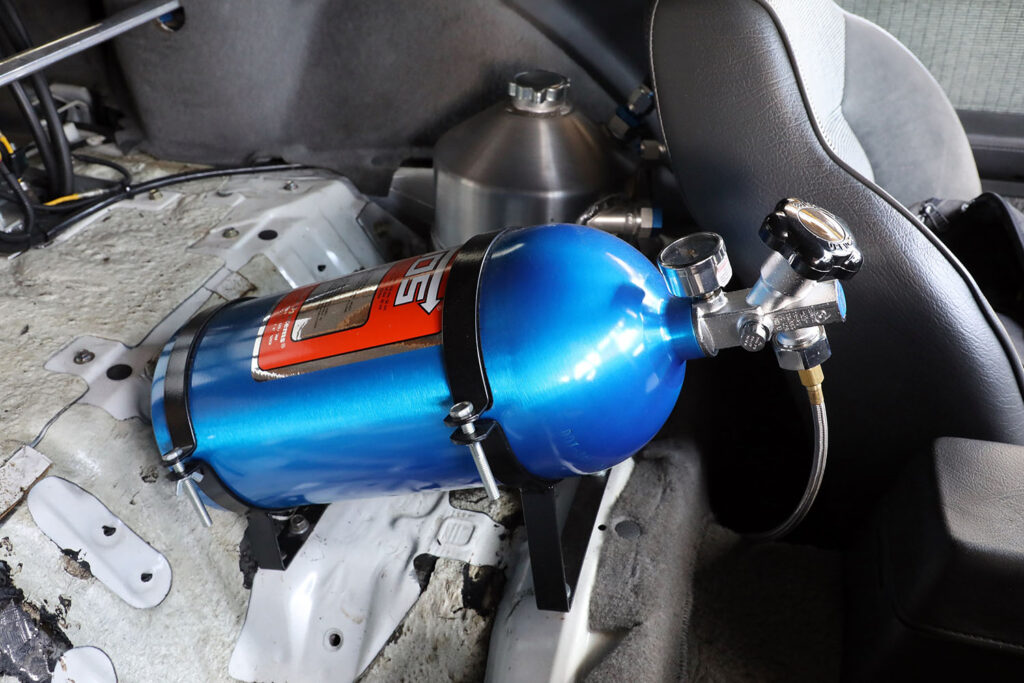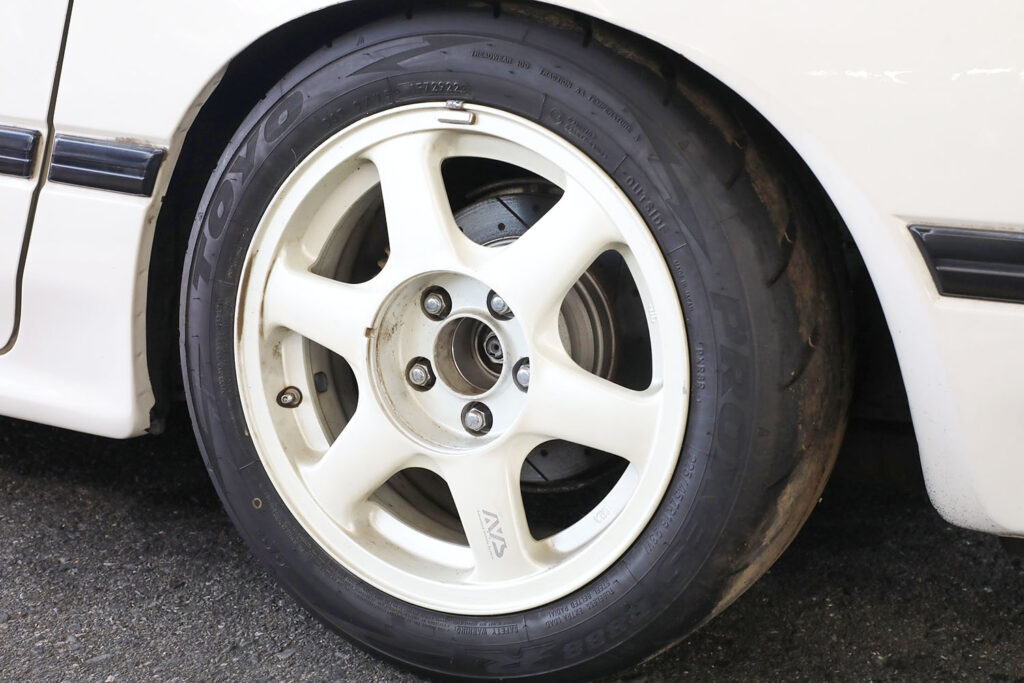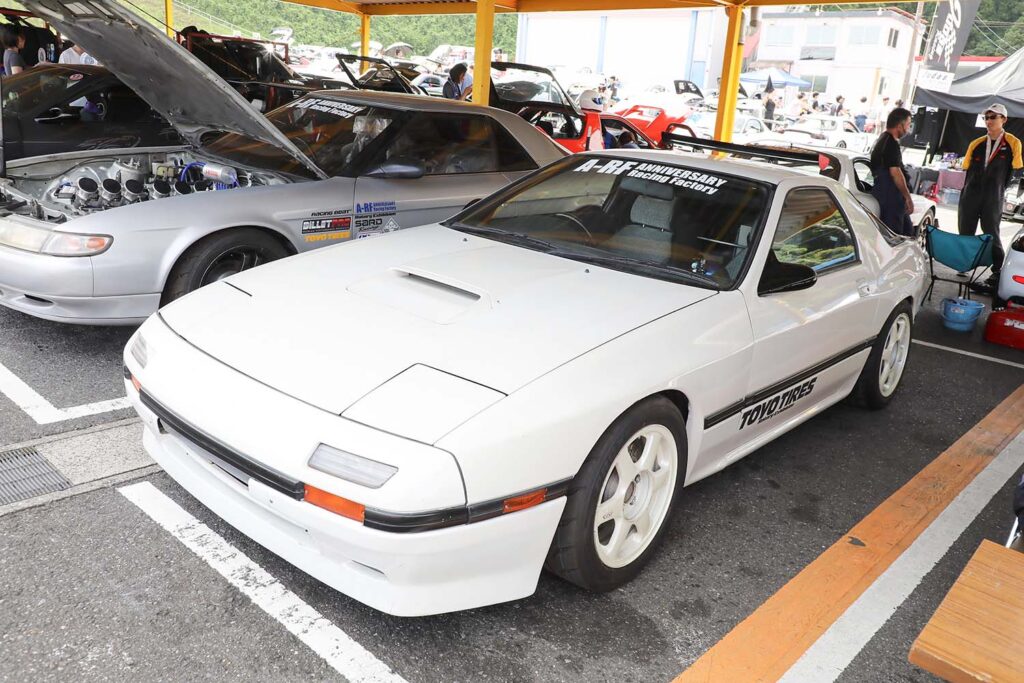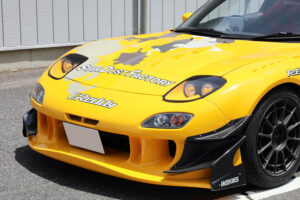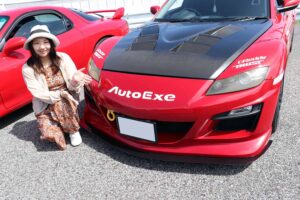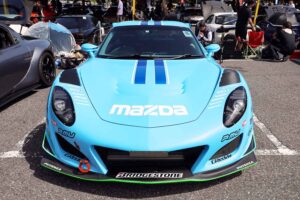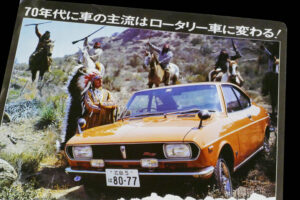Stock style FC3S early model is 4-rotor spec
An early model FC3S Mazda RX-7 was built as a new machine with the same tuning style as in the early 1990s by “Anniversary,” a tuning store in Saitama, Japan. This FC3S may look stock on the outside, but what’s inside is amazing.
Maximum output reached 620 hp
RE specialty store Anniversary is known as a challenging tuning store. They are always thinking of new ideas, such as the port that they invented for rotary engines, and are constantly challenging themselves with new and innovative ideas to improve performance. This vehicle, which was completed by such a genuine RE tuning store, looks like a stock body, but when we checked the engine compartment, we found not a 2-rotor 13B engine, but a 4-rotor 13B engine with four rotor housings, which is simply double the number of rotors. Moreover, this 4-rotor 13B unit was a high-tuned model with the NA specifications that Anniversary specializes in, and the port shape inside the engine had been changed from a side port to a peripheral port.
Anniversary has always recommended the rotary NA engine with excellent torque and response as a specification that allows the driver to step on the accelerator pedal more and more, rather than tuning the engine to provide more power than it can hold. I have driven this specification, and I remember that it had a great feeling of torque generated from low rpm and extended to high rpm, which cannot be experienced with a turbocharged car. I also remember that the response to the accelerator and the response of stepping back from the partial range was good and control was outstanding.
As for the 4-rotor 13B specification this time, it was built to combine power and torque, and its maximum output reaches 620 horsepower, which is astonishing.
Made in New Zealand with high-quality
As those familiar with rotary engines know, its components consist of four parts: housing, rotor, seal, and eccentric shaft. By assembling these parts in parallel, it is possible to have 2, 3, or 4 rotors, and the most important part to combine them is the eccentric shaft that passes through the center of the housing.
The eccentric shaft, which acts like a crankshaft in a reciprocating engine, is a key component of the rotary engine. The rotary engine, which has only a few parts, is built around this shaft. Therefore, by extending this shaft further and further, it is theoretically possible to create not only a 4-rotor engine, but also a 6-rotor or 8-rotor engine.
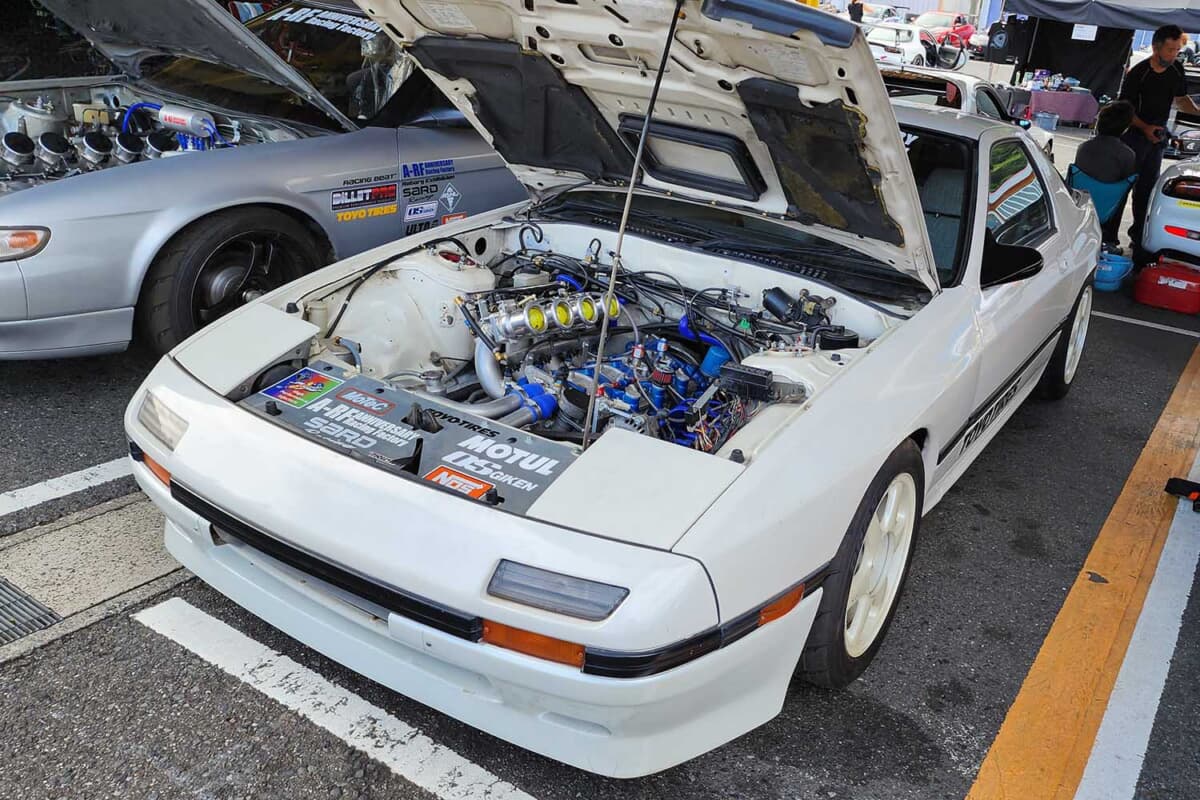
Anniversary has produced many 4-rotor NAs in the past, and has completed a manual with specifications to ensure sufficient durability on the streets. Based on the results, we carefully selected only the best parts with high product value, and incorporated them into the original 4-rotor unit to complete the product.
Anniversary said that New Zealand is currently the focus of attention as a country that handles high-quality rotary parts, and the FC3S eccentric shaft introduced here was also a product made by a New Zealand manufacturer. He says that they are more efficient than American or Australian-made products, and are strong and durable enough to be used with confidence.
Attractive gap between stock style and high power tuning
Also noteworthy, other than this engine, are the 16-inch pearl-white Yokohama AVS Model 6 wheels that were available at the time. Looking back on those days, models such as BBS, Panasport, and RS Watanabe were popular as wheels for the FC3S, but the AVS, which had just come out at the time, attracted attention for its spoke design that extended to the rim, making the wheels look bigger.
In addition, many other items on this car evoke a sense of nostalgia, most notably the sticker on the rear of the car. The “FORTIS” and “Redic” stickers, which will ring a bell with those who knew the car back then, are nostalgic items that have not been seen in a long time. FORTIS is an engine oil made by Trust, and there are different types such as F2 and F3 with different viscosity. Furthermore, “Redic” is an item that indicates the installation of additional injector controllers, which was a standard tuning item at that time. Placing these stickers on the car, gives the car a tuned look even though it is a stock exterior.
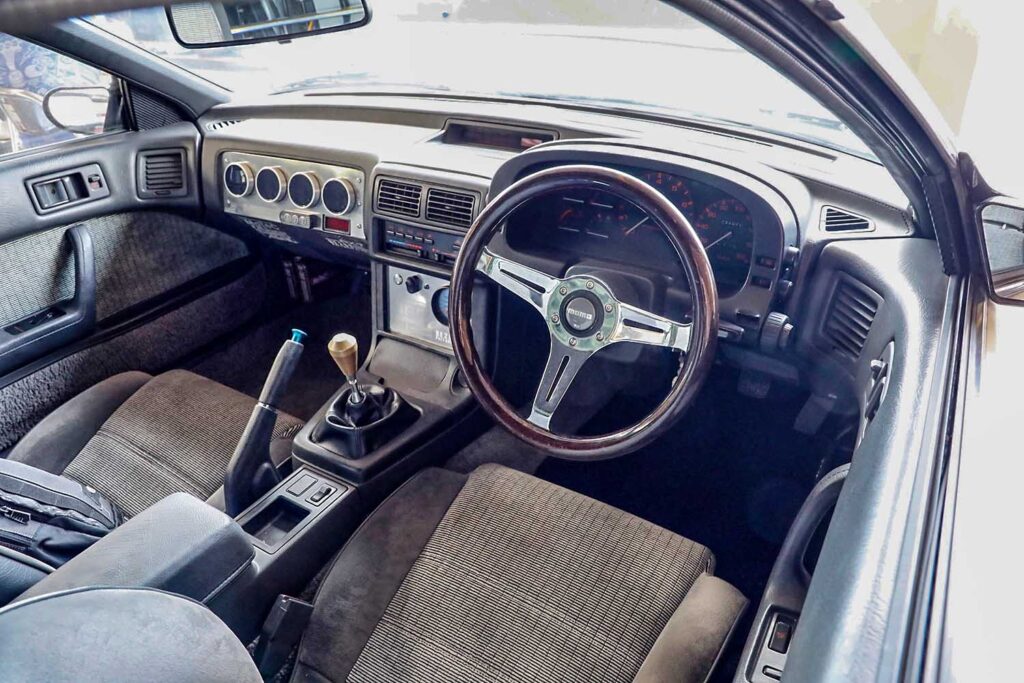
The appearance of the car has a genuine style that emphasizes the originality and the atmosphere of a lover, but inside is a state-of-the-art machine with a high-power engine that is a good old tuned car. The gap between the two is very unique, and unlike the calm appearance of the car, the moment the engine was started, the greatness of this car could be fully felt by the rumbling exhaust sound.





